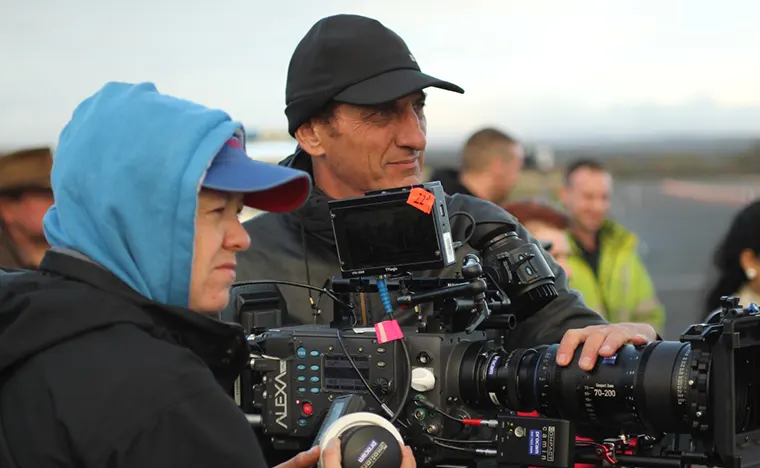Here’s an interview with Pablo Rosso, director of photography for REC 2. While the Jaume Balaguero-Paco Plaza duo are the creative process behind the [REC] saga, we mustn’t forget the third member of the gang, the one who did so much to give the series its distinctive look: Pablo Rosso, the photo director on both films.
Given the considerable success of the first [REC] and the visual challenge the film presented, how did you approach the sequel? Weren’t you afraid of making the same film all over again, just a little more spectacular?
[REC] was a free experiment. The “language” developed as we shot. The audience didn’t really know what they were going to see. It was quite an innovative experience for the audience and for us too. [REC]2 begins in the complete opposite direction: the audience who are going to see the sequel clearly know what to expect (even if everyone expects something different…). In this sequel, we couldn’t deceive the viewer and abandon the “[REC] spirit”, but we couldn’t do the same thing either. I think we’ve struck a balance between the spirit of [REC] and the desire to innovate.
The first film was already a technical, with the concept of a single camera as the story’s sole point of view. But this time, you multiply everything by 4. Do you to make things difficult?
It didn’t really present any great difficulties. The various cameras used have their virtues and their faults, and we try to take advantage of them. The most difficult part was undoubtedly controlling the lighting in the building. Depending on whether the light beam was cut or not, and given that we were shooting on location, not in a studio, with wide-angle cameras, it was almost impossible to hide the lighting fixtures. This is what largely determined the look of the film: the light comes from outside or is on the actors. In addition to their lines and action scenes, the actors had to learn lighting choreography and perfectly assimilate precise, technical instructions, such as “shine the light on so-and-so’s face, then lower your arm so that the light you have on you shines on the girl’s face”. All this had to be instinctive for them, to make the action realistic and fluid.
How did you define the visual styles for each film?
For both films, the basic brief was the same: it had to be credible, authentic. From there, the lighting conditions in 1 (a building inhabited by people on a classic night) and 2 (a building with the light cut off and inhabited by zombies) did the rest. It also depended on who had the camera and how they wore it. In the first film, it’s a journalist with a camera in his hand. In 2, it’s either a cop with a shoulder-mounted camera – a subtle but perceptible difference – or a cop with a mini-cam attached to a helmet. And there was yet another visual possibility with the sequences of young teenagers with their traditional video camera in hand.
What were the differences between the two shoots?
I think the big difference was the pressure. For the first, we were free to do things our own way. For the second, we knew that the audience was expecting a lot. So we were all hyper-involved in making sure we didn’t disappoint them.
How did you manage the technical challenges of shooting with several different types of camera on set?
This wasn’t difficult, as each shot was filmed with the corresponding camera. Incorporating the mini-cameras into the helmets posed a technical challenge. Having such a wide angle meant hiding the lighting. We also chose to shoot the dailies with the lowest technical quality, to get the best out of the blurred texture that characterizes the film’s look.
What do you think of the technological evolution that now makes it possible for anyone to make a film?
That’s right. Once again, it’s the idea that wins out. It used to be harder to make a film. Nowadays, it’s easier from a technical point of view, we all have a camera at hand without knowing it. Jaume and I made a short film with a cell phone. Anyway, making a film is easy nowadays, but making a good film is still as hard as it ever was.






